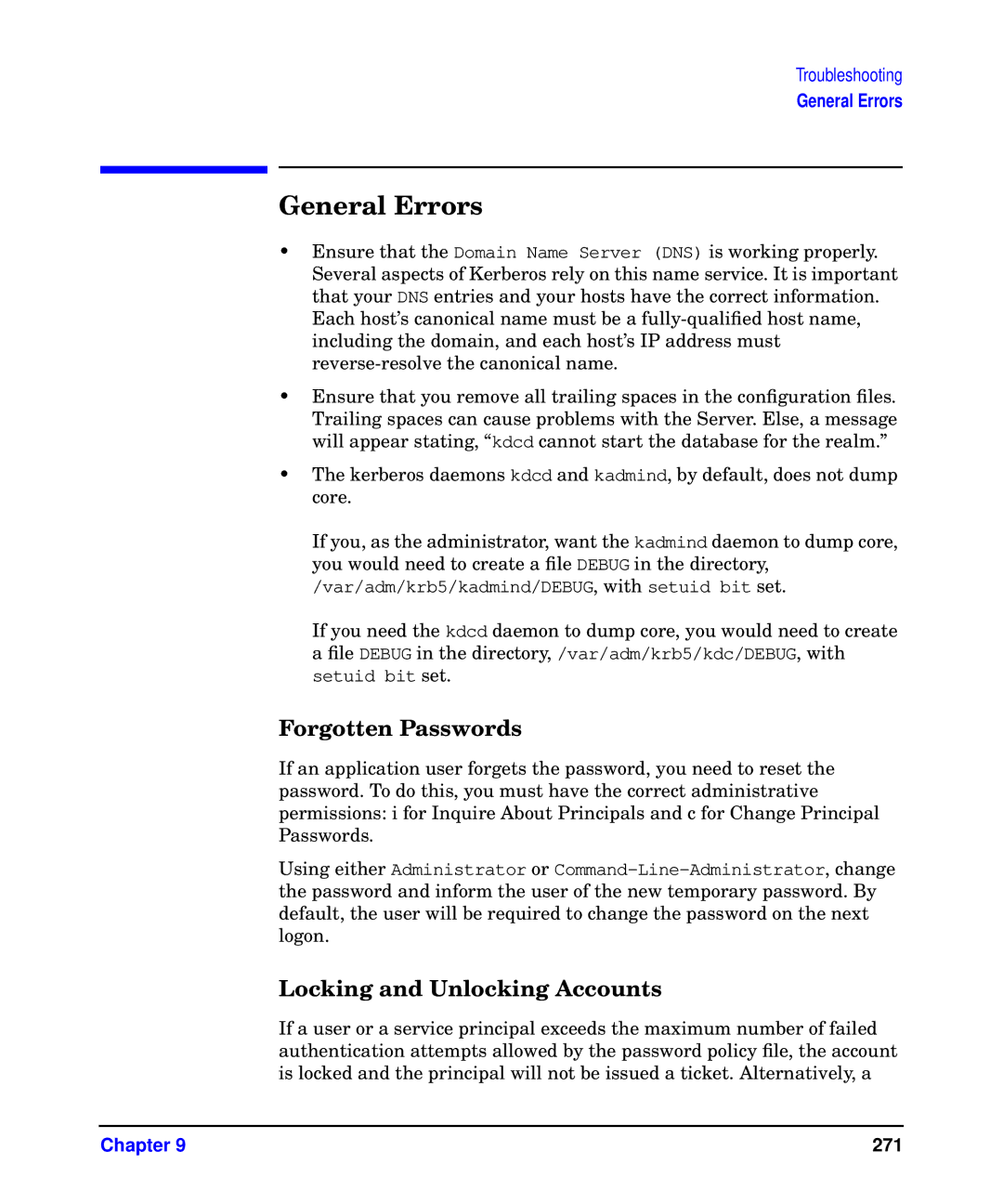
Troubleshooting
General Errors
General Errors
•Ensure that the Domain Name Server (DNS) is working properly. Several aspects of Kerberos rely on this name service. It is important that your DNS entries and your hosts have the correct information. Each host’s canonical name must be a
•Ensure that you remove all trailing spaces in the configuration files. Trailing spaces can cause problems with the Server. Else, a message will appear stating, “kdcd cannot start the database for the realm.”
•The kerberos daemons kdcd and kadmind, by default, does not dump core.
If you, as the administrator, want the kadmind daemon to dump core, you would need to create a file DEBUG in the directory,
/var/adm/krb5/kadmind/DEBUG, with setuid bit set.
If you need the kdcd daemon to dump core, you would need to create a file DEBUG in the directory, /var/adm/krb5/kdc/DEBUG, with setuid bit set.
Forgotten Passwords
If an application user forgets the password, you need to reset the password. To do this, you must have the correct administrative permissions: i for Inquire About Principals and c for Change Principal Passwords.
Using either Administrator or
Locking and Unlocking Accounts
If a user or a service principal exceeds the maximum number of failed authentication attempts allowed by the password policy file, the account is locked and the principal will not be issued a ticket. Alternatively, a
Chapter 9 | 271 |
